Improving your skills and technique sets you up for success in the pool. However, certain skills influence each other, and improving one may lead to a decline in another. A slight drop is normal, but a noticeable decline can start to affect performance negatively. The secret to swimming faster is optimizing your swimming metric tradeoffs. Elite athletes rarely have the highest score in an individual metric; they are, however, the masters of metric tradeoffs.
How to master metric tradeoffs to swim faster?
Let’s explore some of the most common relationships between metrics and how their changes affect speed. To do this, we will look into data points for each part of swimming: from stroke technique to turns and underwaters.
1. Stroke Technique
To increase your overwater speed, you must increase either your Stroke Rate or DPS or do both.
DPS [m/stroke] x Stroke Rate [stroke/sec] = Overwater Traveling Speed [m/sec].

For Stroke Rate, TritonWear calculates each stroke cycle’s average time, including all but the first stroke cycle. Distance Per Stroke (DPS) is measured in meters per stroke [m/stroke], and it calculates the distance swum overwater (from breakout to the end of the pool) divided by the number of strokes.
The goal is to achieve the ideal Stroke Rate and DPS; this means a high enough Stroke Rate to sustain a good DPS. Finding the right balance between the two is a matter of sustainability: how effective are your first 4 cycles (Stroke Rate Start) compared to your last 4 cycles(Stroke Rate End)? Can you maintain your Stroke Rate from (Start-Mid End) and carry your body through the water efficiently?
What impacts Stroke Rate and DPS?
Each metric’s ideal values depend on many variables, including the pool size, the event distance, stroke, stroke efficiency, height, the swimmer’s metric baseline (a swimmer’s usual average for each metric) and more.
-
Pool Size. For example, think of the 100 SCM freestyle vs. 100 LCM freestyle. In the short course pool, the presence of turns and underwaters allows an increased Stroke Rate. Turns and underwaters offer a break from the load the arms take. As a result, the swimmers adopt a slightly lower Distance Per Stroke but sustain a relatively higher Stroke Rate.
- Event Distance. Sprinters will generally hold higher Stroke Rates than distance swimmers because they can maintain a fast Stroke Rate throughout the entire distance. It is also a lot more challenging to sustain a high Stroke Rate over longer distances. For instance, in the 50 free elite male swimmers’ SR varies from 120 (str/min) to nearly 150 (str/min). Contrary to the 200 - 800 free, were SR may vary between 70 (str/min) and 100 (str/min), depending on the technique. Many swimmers prefer to increase their Stroke Rate first, as it is easier to increase effort than to refine technique ( DPS).
However, a faster SR is not always necessarily better, not when you start to lose your ability to hold water efficiently. In this case, the inverse may be best, where you lower the SR to focus on lengthening the stroke. The focus here is ensuring that any changes in Stroke Rate lead to faster Overwater Speed. If your speed decreases due to an increase in Stroke Rate, it’s a clear sign that DPS was compromised.
Not sure where you stack up in terms of DPS(m/stroke, y/stroke) and SR (s/cycle) here are the average metric ranges for each stroke by pool size and gender.
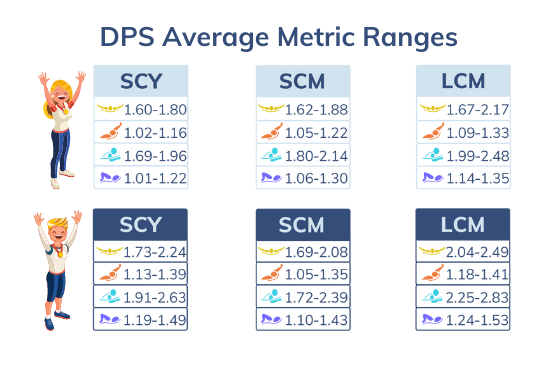
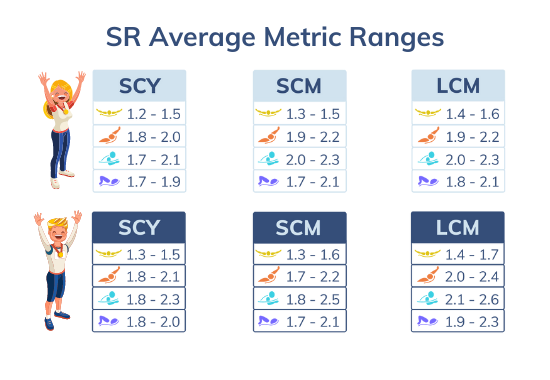
Learn more about: The impact of Stroke Rate & DPS on Freestyle Speed
2. Underwaters
In 1988, Dave Berkoff travelled 32 meters underwater and won Olympic golds. The impact of his races changed swimming forever. The following year FINA introduced the 15m rule for backstroke. The same rule applies today for all strokes. Berkoff was one of the first swimmers to put underwaters on the map at the Olympic level.
%20(1).png?width=480&name=Underwater%20Metrics%20%20(480%20%C3%97%20200%20px)%20(1).png)
What impacts UW Time & Speed?
Ever since underwater swimming has been adopted as the 5th and fastest stroke, it clocks some of the fastest times. Underwater dolphin kicks are used to help maintain acceleration off the wall, where the speed is greatest from the push-off.
The ideal time spent underwater depends on the event distance, stroke, swimmers' capabilities and more. The goal is to increase the distance travelled from the push-off while maintaining a high Underwater Speed and breaking out before that speed starts to decelerate. Next, it is crucial to look at how Time Underwater affects overall speed.
To improve speed, should you increase the time spent underwater or break out faster and start swimming? The answer here is again very different between swimmers. If a longer Time Underwater causes a decrease in speed, it is wiser to break out earlier in the short run and improve underwater kicks long-term. Conversely, if a longer Time Underwater increases speed, the goal is to maximize both the time and Speed Underwater. It is crucial to track these metrics and find your ideal breakout distance to improve your overall performance.
Find your preferred stroke and pool length below to see where you sit within the range for your personal Underwater Time (seconds) and Speed Underwater (m/s, y/s).
.png?width=550&name=Tradeoffs%20Blogs%20Graphics%20%20(4).png)
.png?width=550&name=Tradeoffs%20Blogs%20Graphics%20%20(5).png)
3. Turns
%20(4).png?width=500&name=Underwater%20Metrics%20%20(480%20%C3%97%20200%20px)%20(4).png)
There is an inverse relationship between Push Time and Push Strength; the stronger the push-off, the lower the Push Time.
What impacts Push Strength & Push Time?
Push Strength is related to Underwater Speed and is influenced by gravity and turn type. A downward angle coming out of the wall will result in a low Push Strength score. In contrast, an upward angle will result in a higher score. Keep in mind that a higher number may not necessarily mean a better number, not if a higher Stroke Count accompanies it. A high Push Strength and an increased Stroke count indicate a deep turn and a high push-off coming out of the turn.
Lastly, your position on the wall will influence Push Time. Turning too close to the wall to position yourself correctly coming out will result in a higher Push Time score. On the other hand, turning too early will result in a lower score. To generate speed, focus on maximizing Push Strength and minimizing Push Time. Use Push Strength to dig into the turn exit and capitalize on this velocity.
Below are the charts that show the average range swimmers in our database for Push Strength (number value) and Push Time (milliseconds) Check where you fall for your preferred stroke and pool length combinations.
.png?width=550&name=Tradeoffs%20Blogs%20Graphics%20%20(2).png)
.png?width=550&name=Tradeoffs%20Blogs%20Graphics%20%20(3).png)
If you see yourself as a coach with a growth mindset or someone ready to take coaching to the next level, grab this playbook; it's step-by-step guidance to help you integrate data into your training.

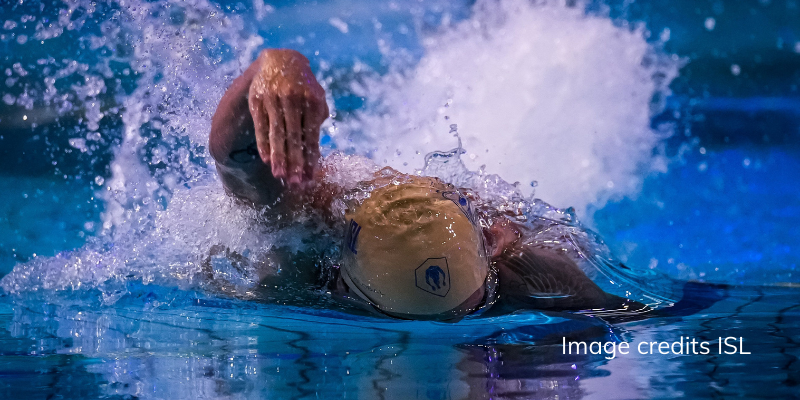

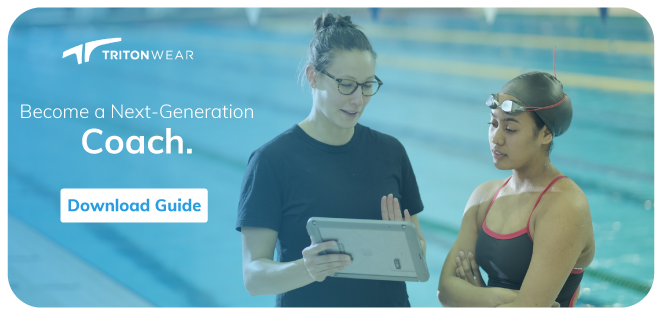

.png)
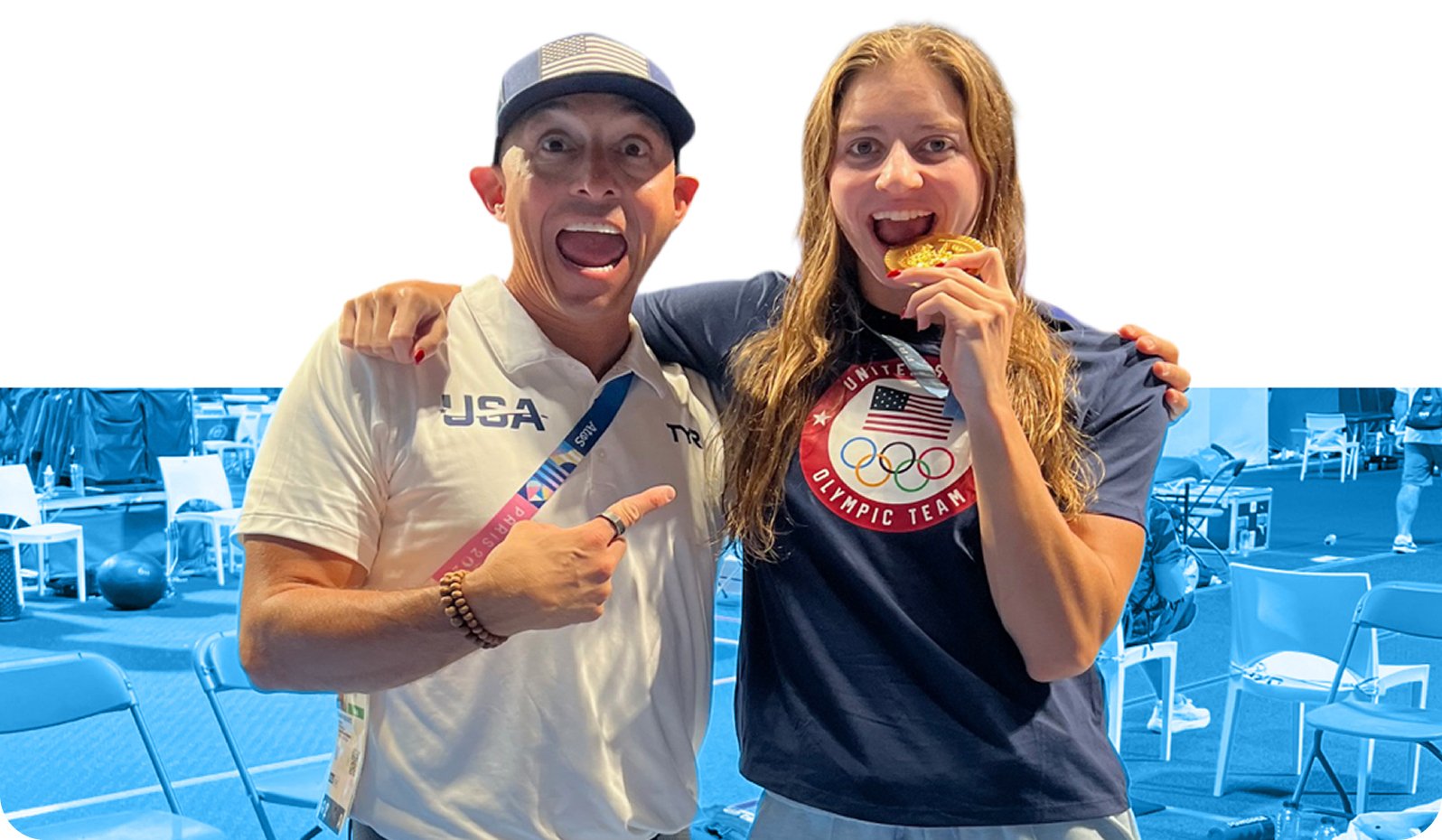
.png)